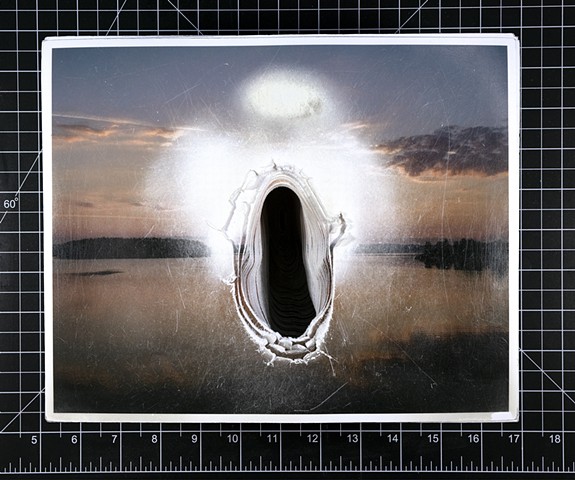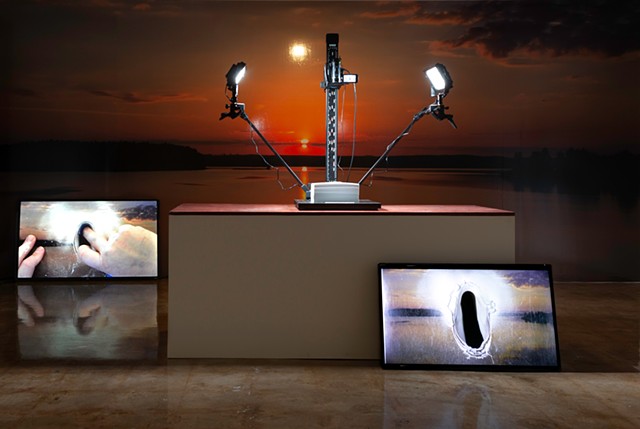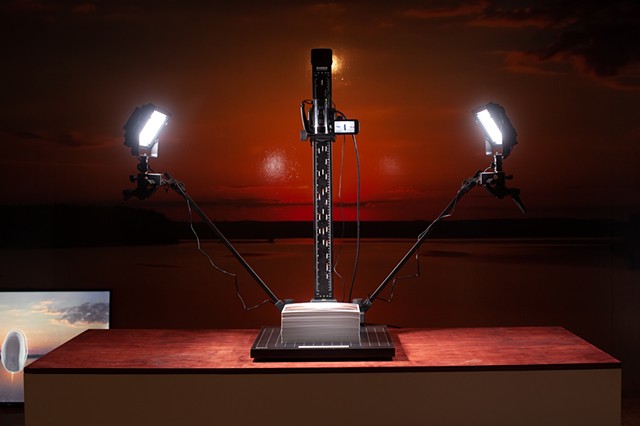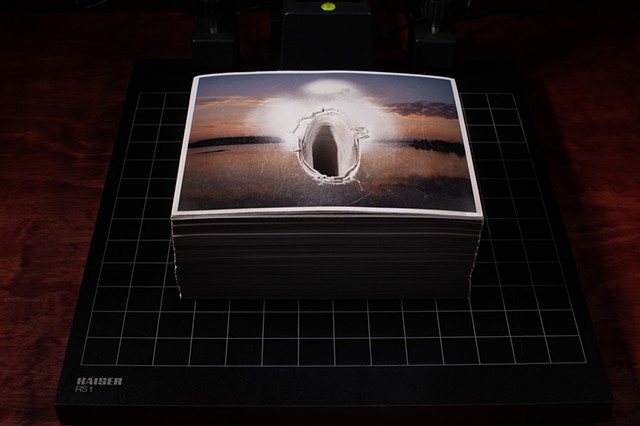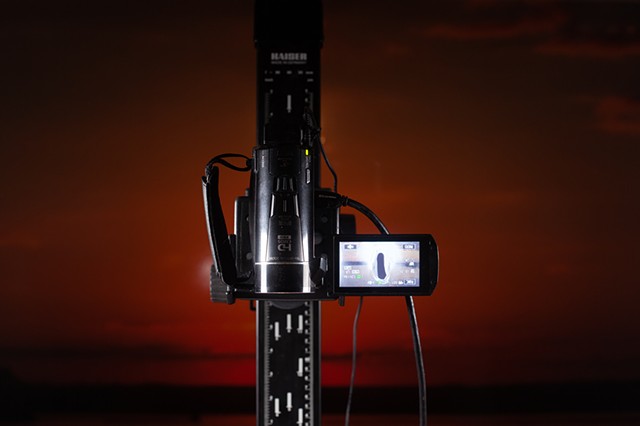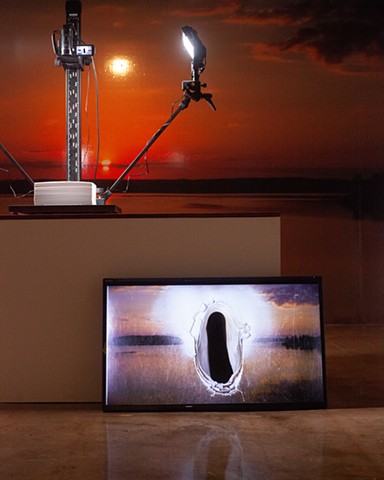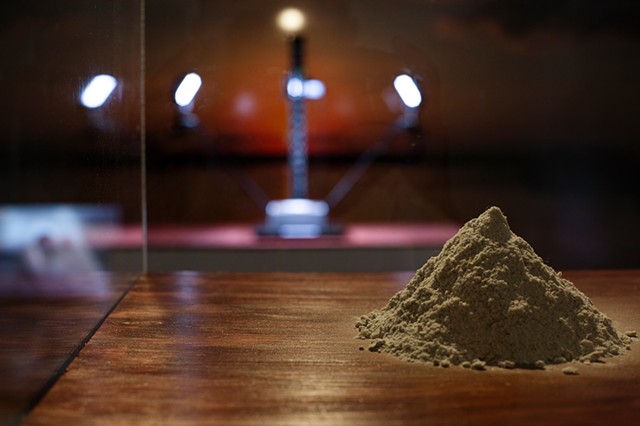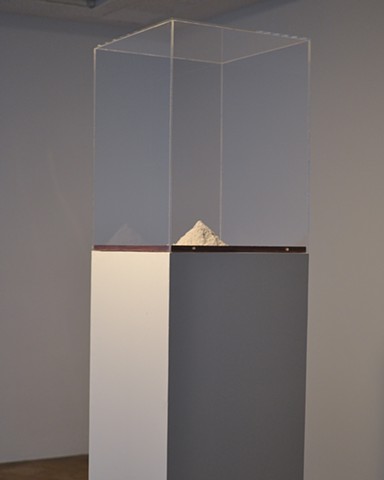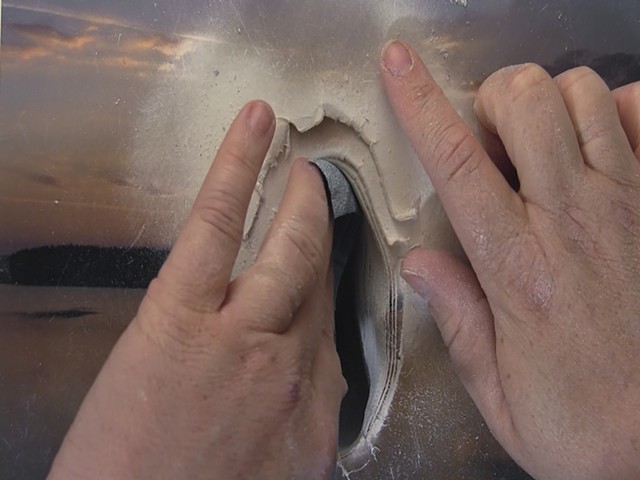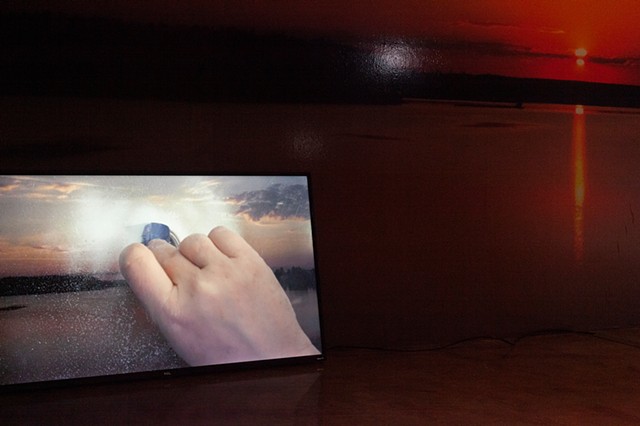Sanding Away A Year's Worth of Sunsets
Sanding Away A Year's Worth of Sunsets, includes the installation of the stack of photographs on a copy stand, the 267 hours of video documentation playing on a monitor that leans against a large scale reproduction of the original photograph, and the dust that was generated as I removed the image of the sun.
Historically speaking the sun is a god, luminous source of all earthly energy, creator of life, untouchably distant. This massive ball of burning plasma’s reach is seemingly boundless, looming over the land, emitting rays that permeate every day, and reflecting into all but the darkest nights. The sun provides its subjects with warmth and life while it also threatens to burn their skin, make them blind, and eventually kill them.
This inherently uneven power dynamic is ever-present and overwhelmingly embedded into one’s understanding of existence in a heliocentric world, and the desire to possess such force is inherent to the practice of photography—a process of capturing light. In this exhibition, a year’s worth of suns—365 photographs of the setting sun in the landscape—are collected, stacked into a monolith, and methodically altered by the artist’s hand. Day by day, McElroy has sanded through the stack of images toward the source of light—a gesture that is small, intimate and tender, yet ultimately removes the sun as the subject and replaces it with a growing void. The act of erasure is accomplished through the insertion of a female form— represented in this body of work by the agency of the artist’s body as well as a chasm that grows more and more vulvic after each hour of sanding, and in other works which enact the fold as a tool for obliteration. When the appearance of the sun is permitted by the maker of these images, it is heavily controlled through illusion, at times bridled by the artist’s own hands.
McElroy’s explorations present a cinematic approach—making film edits with physical pleats, moving backward in time through the removal of matter, and creating theatrical sets that recall megalithic light-keeping calendars. While duration is certainly a measure of time, it also often functions as an appraisal of both labor and love.
Exhibition Essay by JE Baker
